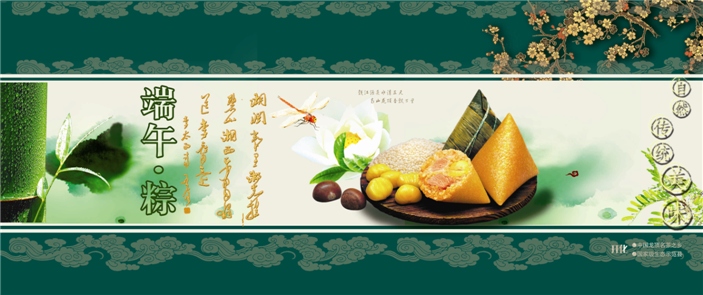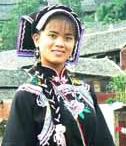About the End of Qing Dynasty
During the previous few years many of the revolutionary groups and secret societies within China had become allied with the republican movement of Sun Yat-sen, whose hope was to start separate provincial revolutions simultaneously in many different parts of China. Events followed his blueprint almost exactly. An uprising in Sichuan (over the government’s railway policy), followed by a rebellion ...
The First Emperor of China, Qin Shi Huang
From the introductory section written by Sidney ShapiroThe Underground Terracotta Army of EmperorQin Shi Huang, edited by Fu TianchouNew World Press, Beijing The imperial tomb of Qin Shi Huang (259-210B.C), the first emperor of China and founder of the short-lived Qin Dynasty (211-206 B.C.), lies 35 kilometers east of the city of Xi;’an, in Lintong County, Shaanxi Province. The tomb was 36 ye...
Classical Prose Movement
The Classical Prose Movement (古文运动) of the late Tang dynasty and the Song dynasty in China advocated clarity and precision rather than the florid piantiwen (骈体文) or parallel prose style that had been popular since the Han dynasty. Parallel prose had a rigid structure and came to be criticized for being overly ornate at the expense of content. The aim of the guwen stylists was to follow the ...
Battle of Bach Dang - Mongol Invasion
The Battle of Bach Dang, which took place at the Bach Dang River, near Ha Long Bay in present-day northern Vietnam, was a battle between Dai Viet and the invading army of the Yuan Dynasty. It's considered part of the Third Mongol Invasion (1287-88). The battle As was foreseen, the Mongolians in Thang Long suffered an acute shortage of food. Without any news about the supply fleet, Prince T...
Margary Affair - A Diplomatic Crisis
Margary Affair is the name of a crisis in Sino-British relations, which followed the murder of British official Augustus Raymond Margary in 1875. As part of efforts to explore overland trade routes between British India and China province, junior British diplomat Augustus Raymond Margary was sent from Shanghai through southwest China to Bhamo in Upper Burma, where he was supposed to met Col...
First Sino-Japanese War - A Major Event in The Modern History of China or Even The World
The First Sino-Japanese War (1894-1895) was fought between Japan and China, and its subject was control of Korea. The Li-Ito Convention, an agreement forged in 1885, allowed both China and Japan to put their own troops in Korea. Nine years later, some Koreans revolted against the incumbent government and so both China and Japan sent troops to help quell the rebellion. However, after the job ...
Later Liang Dynasty (Five Dynasties)
The Later Liang (后梁) (June 1, 907–923) was one of the Five Dynasties during the Five Dynasties and Ten Kingdoms Period in China. It was founded by Zhu Wen, posthumously known as Taizu of Later Liang, after he forced the last emperor of the Tang dynasty to abdicate in his favour (and then murdered him). The Later Liang dynasty would last until 923 when it was destroyed by the Later Tang Dynas...
Huang Daopo - A Legendary Woman
Huang Daopo is a legendary Shanghai woman who made a remarkable contribution to innovate weaving and spinning techniques in the 13th century. Even a modern memorial hall was open in commemoration of her in 2003. "Huang Daopo is especially venerated by people in Southeast Asian countries," said Chen Jingyou, head of Xuhui District's relics and culture management office. Huang is listed...
Zhang Heng - Celebrated Astronomer of Ancient China
Zhang Heng was a celebrated astronomer of ancient China. An inventor of the seismograph and armillary sphere, he made great contributions to the development of astronomy in ancient China. Zhang Heng wrote altogether 32 works on science, philosophy and literature, of which Ling Xian (a summary of astronomical theories at the time) and The Map of Ling Xian are astronomical works. Zhang Heng was...
Background of the Battle of Baekgang
In 660 A.D., the Korean Peninsula was divided into three kingdoms, called Baekje, Silla and Goguryeo. These three kingdoms had constantly fought with each other for control of the peninsula for several centuries up to that point. Furthermore, Goguryeo had been engaged in constant wars with the Chinese Sui and Tang dynasties in addition to the aforementioned two Korean kingdoms. While the three...
- Home
- Survey of China
- Places of interest
- Martial Arts
- Chinese Medicine
- Diet
- Art
- History of China
- Custom
Art
 more
moreChina Beijing International Diet ...
Recently, The hit CCTV documentary, A Bite of China, shown at 10:40 ...

Exhibition of Ancient Chinese Jad...
At least 8,000 years ago, Chinese ancestors discovered a beautiful...

Longmen Grottoes
The Longmen Grottoes, located near Luoyang, Henan Province, are a tr...

The 13th China Shanghai Internati...
On the evening in Shanghai, lights glittering warmly in front of n...

Custom
 more
moreProvinces Site
Chinese Medicine
 more
moreMartial Arts
Chinese martial arts practitioner pens 400 guide...
A Chinese martial arts practitioner in northern China's Hebei provin...
Tai Chi Master Class Held in Moscow
MOSCOW, June 15, 2016 (Xinhua) -- Students learn from Shaolin ...
Celebriting 70 years' efforts in restoring Mogao...
Work is being carried out at the restoration site of cave No 98 a...
Chinese Food Culture
Pai huang gua (smashed cucumbers)
In a report titled Smashed cucumber salad takes Manhattan, The New Y...
Jian bing (grilled savory crepe)
Jian bing, a form of grilled savory crepe with stuffing, is a popula...
General Tao's Chicken
Though name of the dish comes from general Zuo Zongtang (1812-1885...



















